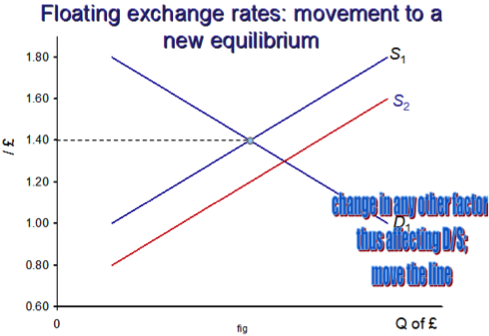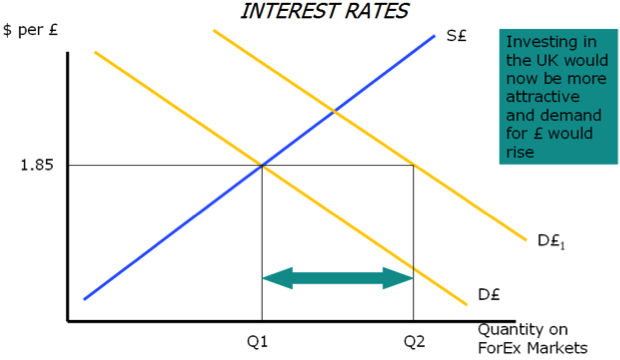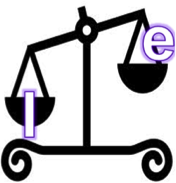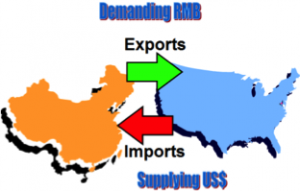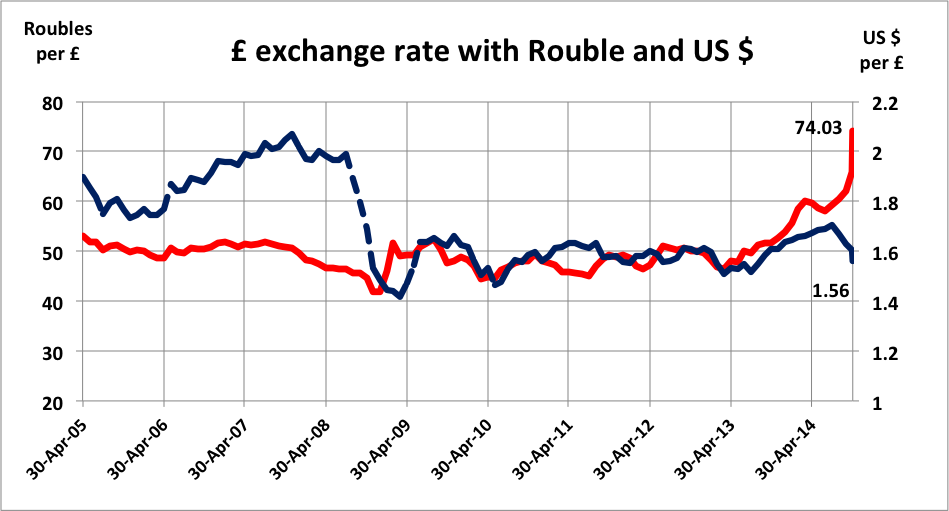Exchange Rates
Introduction to Exchange Rates
The economies definition of ‘exchange rates’ is the value of one currency in terms of another.
-
Exchange rates can either appreciate or depreciate.
-
Appreciation = SPICED – Strong Pound = Imports Cheap & Exports Dear. E.g. The Pound is Strong and currently worth a lot of Euros.
-
Depreciation = WPIDEC – Weak Pound = Imports Dear & Exports Cheap E.g. RMB is Weak and thus very cheap for British tourists to go there.
Food for thought:
-
How can increased demand for a currency lead to a SPICED situation?? Show this on a D&S curve
-
How can increased supply for a currency lead to a WPIDEC situation? Show this on a D&S curve
-
If you are a big importer do you want to locate in a strong or weak currency?
-
If you are a big exporter do you want to locate in a strong or weak currency?
We’ll come back to these questions later.
An overview of Exchange Rates:
-
The foreign exchange market (FOREX) - The market for foreign currencies.
-
All those consumers, firms and governments willing and able to buy foreign currency.
-
All those willing and able to supply foreign currency.
Definition of Exchange Rates: The price of one currency in terms of another. The amount of one currency that has to be given up to purchase another currency
Current exchange rates for the £ Pound? Look it up!
£1 = _US$? _
£1 = €?
-
Exchange rates are determined by the demand and supply of a currency on foreign exchange markets.
-
Demand is determined by the purchase of exports; supply by the purchase of imports.
Determinants of Exchange Rates
-
Exchange rates are determined by the demand for and the supply of currencies on the __foreign exchange market. __The demand and supply of currencies is in turn determined by:
-
Relative interest rates, the demand for imports (affects the demand for Sterling Pounds!), the demand for exports (affects the supply of Sterling pounds!), investment opportunities, speculation sentiments, global trade patterns and Changes in relative inflation rates.
‘Dirty’ or ‘Managed’ Floating / Managed flexibility
Where the exchange rate is allowed to float freely but intervention by governments or other agencies is carried out to manipulate the rate within some desired band (e.g. China and its artificially low currency).
In the case of rising value of a currency (i.e. a strong RMB):
-
How will it affect exports?
-
Exports will become more expensive to buy overseas.
-
This may reduce overseas demand for them.
-
Export producers may experience a fall in sales and cut back output and employment.
-
In order to stop their currency value rising too far a government may supply more on the global exchange market from its reserves (America did this during the recession - why?).
-
Supply increases. Price?
-
The increase in the supply will lower the exchange rate.
In the case of falling value of a currency (a maintained and weak RMB):
-
How will this affect exports?
-
This is why the Chinese are keeping their currency artificially low. It is also why the Americans are so angry!
-
How will this affect imports?
-
Buying imports become more expensive as currency values overseas will have risen.
-
(But China has a healthy balance of payments, with exports>imports).
-
To try to prevent imported inflation a government may use its gold and foreign currency reserves to buy their own currency
-
Demand increases. Price?
-
This increase in the demand for their currency on the global currency market will help push up its market exchange rate.
For example – the Swiss Franc
Interest Rates
When UK interest rates are high or rising, how will this affect saving?
-
Overseas residents may be keen to save or invest money in UK banks and other financial institutions
-
The demand for pounds rises, the value of the pound increase
The UK government can use interest rates to affect the value of the pound and the price of imported goods and services.
A rise in other countries’ interest rates may lead to the withdrawal of foreign investment from the UK with a depressing effect on the value of the pound.
Linking to 2.4.4
Exchange rates are an important consideration and will impact firms in different markets, both directly and indirectly.
Inflation
If the UK’s inflation rate is higher than that of other countries:
-
The price of UK goods and services will be rising faster than foreign prices
-
UK goods will become uncompetitive
-
Demand for UK exports, and therefore for pounds, will fall
__ If the UK’s inflation rate is lower than that of other countries:__
-
Imports become more competitive
-
More will be demanded in return for more pounds being supplied to pay for them
High UK inflation will tend to reduce the value of the pound.
The fluctuating exchange rate of the Sterling
Why is UK sterling demanded?
-
Pay for their imports of goods and services from the UK
-
Save money in UK financial institutions and to invest in UK companies
Why is UK sterling supplied?
-
Exchange for foreign currencies to buy imports of goods and services from other countries
-
To make investment overseas
If imports are > exports:
If the UK imports a greater value of goods and services than it exports
-
Current account deficit (i.e. trade balance or B of P deficit)
-
If the deficit increases further
-
The UK is buying more imports, or losing its export trade
-
More pounds must be supplied to pay for the imports, while less pounds are demanded by overseas residents because they are buying less of UK exports
-
The price of the pound will depreciate - WPIDEC, e.g. £1 = € 1.50 £1 = € 1.45
-
UK exports appear to be cheaper
-
Imports to the UK appear more expensive
If exports are > imports
-
If the UK earns more from its export than it pays for its imports
-
Current account surplus
-
More pounds will be demanded to pay for UK exports while the UK will not supply so many pounds as it buys less imports
-
The pound will appreciate, e.g. £1 = $1.85 £1 = $1.91
-
UK exports appear to be more expensive
-
Imports to the UK appear to be cheaper
NB - The volumes and the actual amount of income and expenditure will depend on the relative price elasticity of demand for imports and exports.
Effective Exchange Rates
The real Effective Exchange Rate (REER) is the weighted average of a country’s currency relative to an INDEX or Basket of other major currencies, adjusted for the effects of inflation. The weights are determined by comparing the relative trade balance of a country’s currency against each country within the Index.
The following website shows the EER for the GBP from 1990-present day. The effects of the GFC and BREXIT vote are clear to see – which demonstrates the volatility of exchange rates!
Exam Style Questions
Forex Ups and Downs
The graph shows the value of the pound versus the US $ and Russian rouble between 2005 and November 2014. The values shown at the end of the lines represent the latest ‘spot’ price as at Friday November 14th. Study the graph then answer the questions below.
Questions (24 marks; 30 minutes)
Keywords: Structure = Define, State, Link, Explain
- Explain how the exchange rate between the £ and the US $ changed in 2008 (4 marks)
-
The change can either be viewed as a fall in the £ or a rise in the value of the $; either way, the fact is that £1 bought $2 (approx.) on April 30 2008, but only $1.50 (approx.) within 6-8 months.
-
The speed and severity of that change was exceptional, because nothing like it occurred at any other time between the £ and $ in the ten years shown on the graph.
- Explain how it’s possible for the £’s exchange rate to go up against one currency but down against another, as in the case of the rouble and dollar in 2014. (4 marks)
-
The value of a freely floating currency such as the £ is dependent solely upon the supply and demand for it in relation to its bilateral (one-to-one) partners. So the dramatic strengthening of the £ against the rouble in 2014 must either be a function of sharp selling of roubles or enthusiastic buying of £s.
-
The path of the £ against the $ gives an indication that there is probably no widespread movement towards buying £s ; therefore the rise in the £ against the rouble can reasonably be attributed to traders’ desire to sell the Russian currency (perhaps people want to get their money out of Russia?)
- Use the data in the chart to calculate the approximate change in the value of the rouble against the £ between mid-2012 and November 14th__ 2014. (4 marks)__
__Keywords: Structure = Formula, Figures, Answers. __
-
It seems that the £’s value changed from 50 roubles to 74.03 roubles over that period.
-
That’s a % change of 24.03/50 x 100 = +48%, i.e. the £ has strengthened by 48% against the rouble.
- Figures from Jaguar Land Rover (JLR) show that in 2012 10% of sales of their ‘Evoque’ car were to Russia. Assess the possible impact on JLR of the recent change in the £ - rouble exchange rate. (12 marks)
Keywords: Structure = 2 VS 2 plus Conclusion
-
The dramatic (48%) rise in the £ against the rouble threatens to stop JLR’s success in its tracks – either JLR will have to impose a very sharp increase in the price of an Evoque in Russia or it will have to swallow a very sharp decline in the profitability of these exports – quite possibly making each export sale unprofitable.
-
The only saving grace would be if the Evoque is seen as such a desirable, differentiated car in Russia, its price elasticity might be so low as to allow JLR to impose a large price increase without affecting demand too much.
-
Another factor is to bear in mind that if the rouble has weakened generally against other foreign currencies, JLR’s position may not be quite as bad; that is, if the rouble has fallen by 48% against the Euro, then imported BMWs and Mercs are probably having to increase their prices as much as JLR; if so, as long as Russian buyers are determined to buy a foreign as opposed to a home-produced car, the price tags may not be too offputting.
-
On the other hand, PED is not just about competitive factors it’s also about household incomes; if every imported car puts its price up by 40%, a large number of households (and businesses) may no longer be able to afford their purchase.

